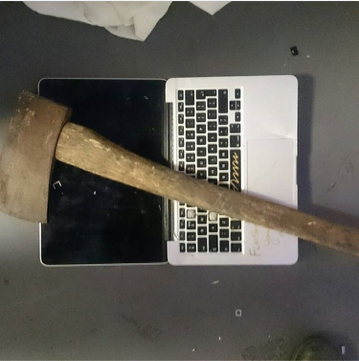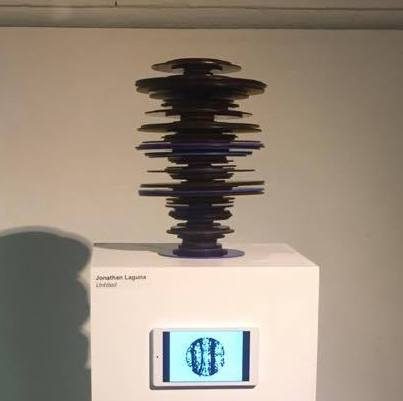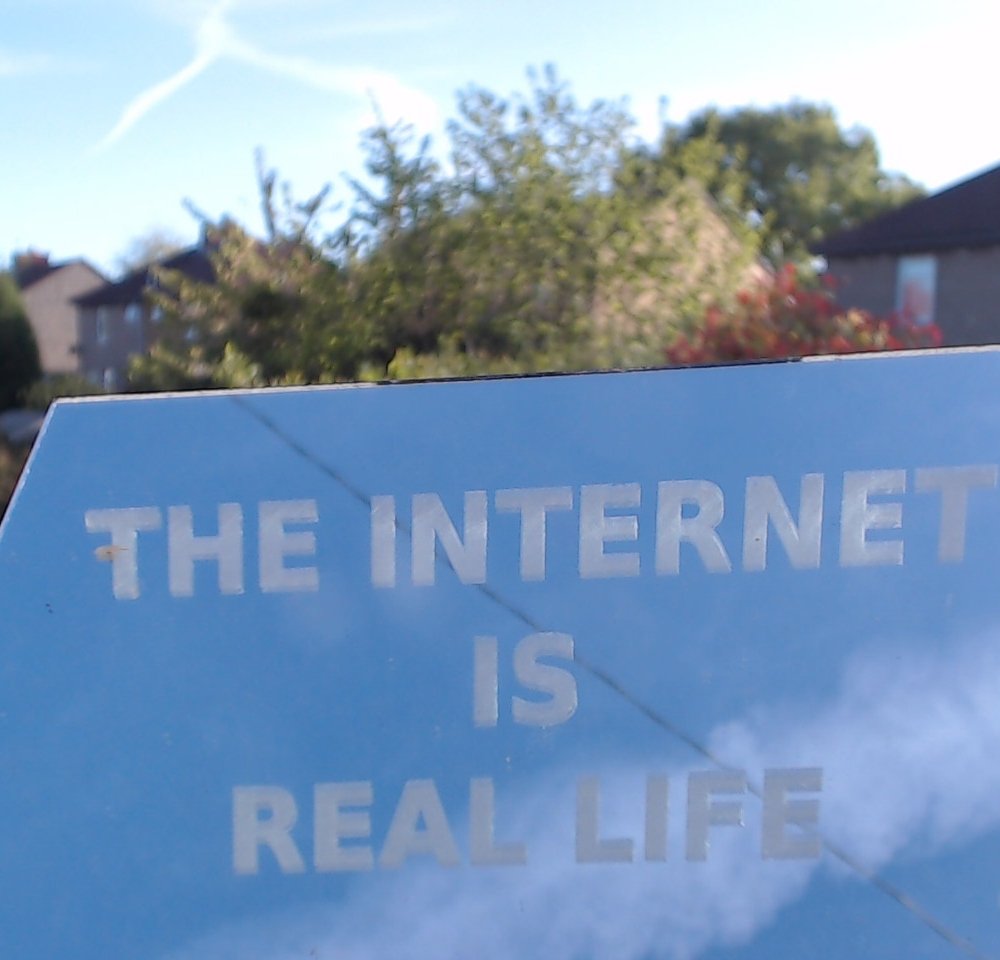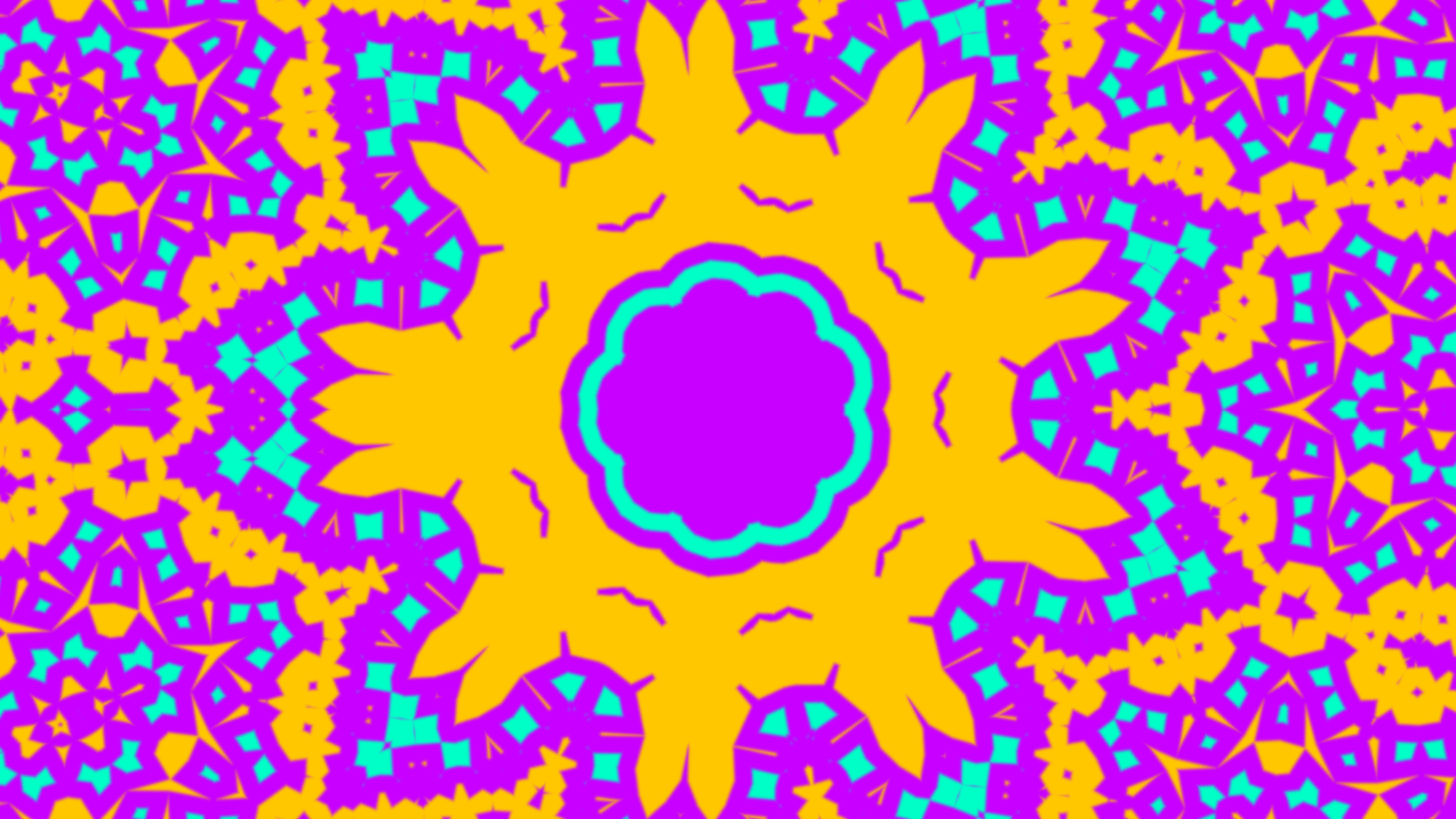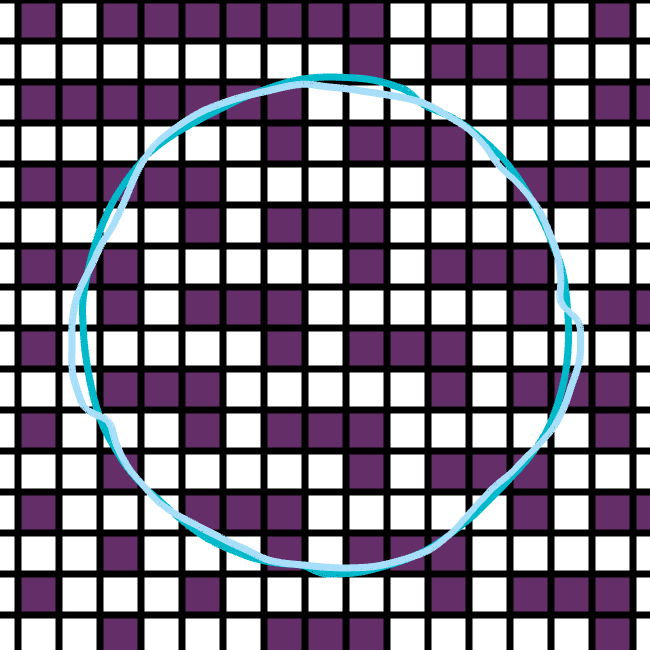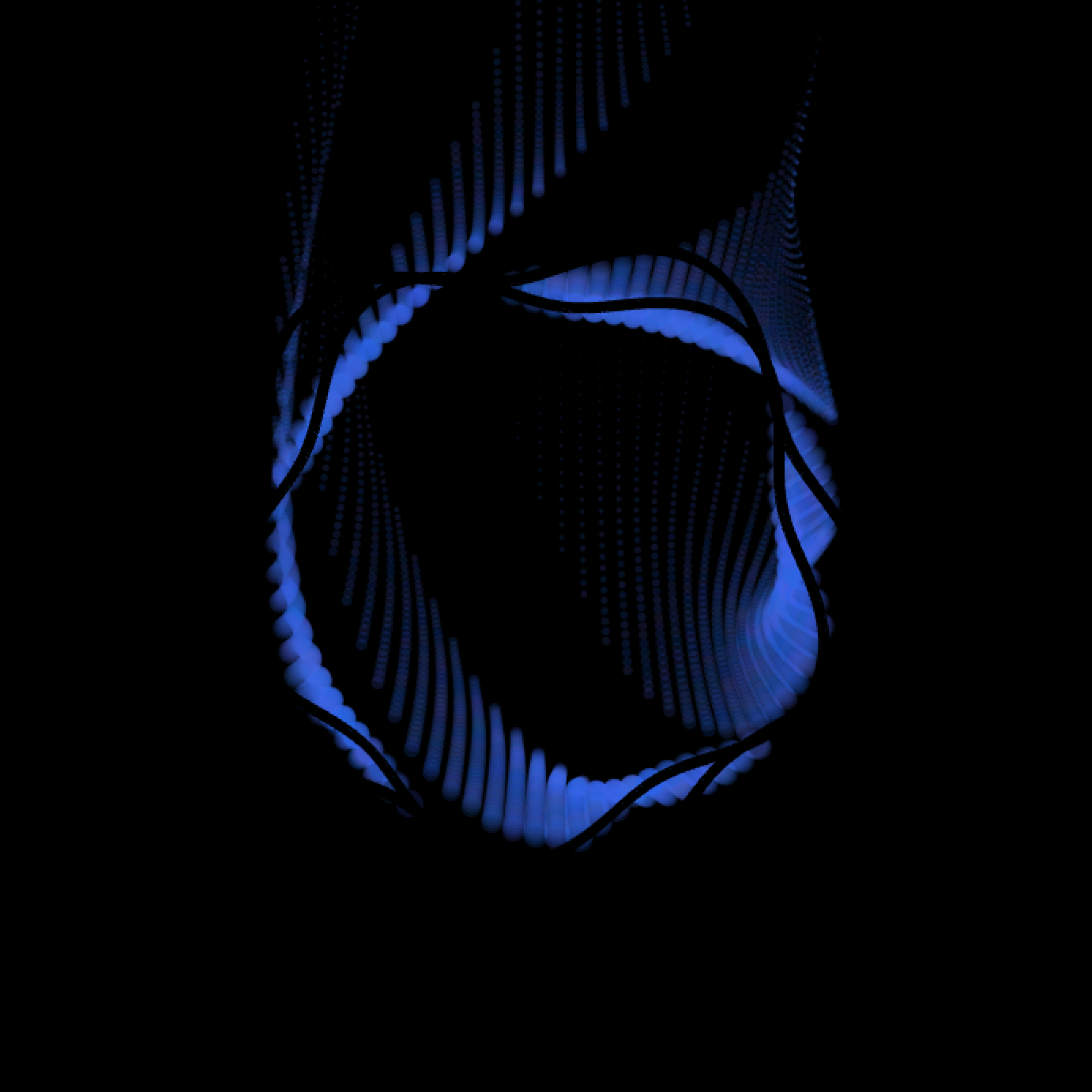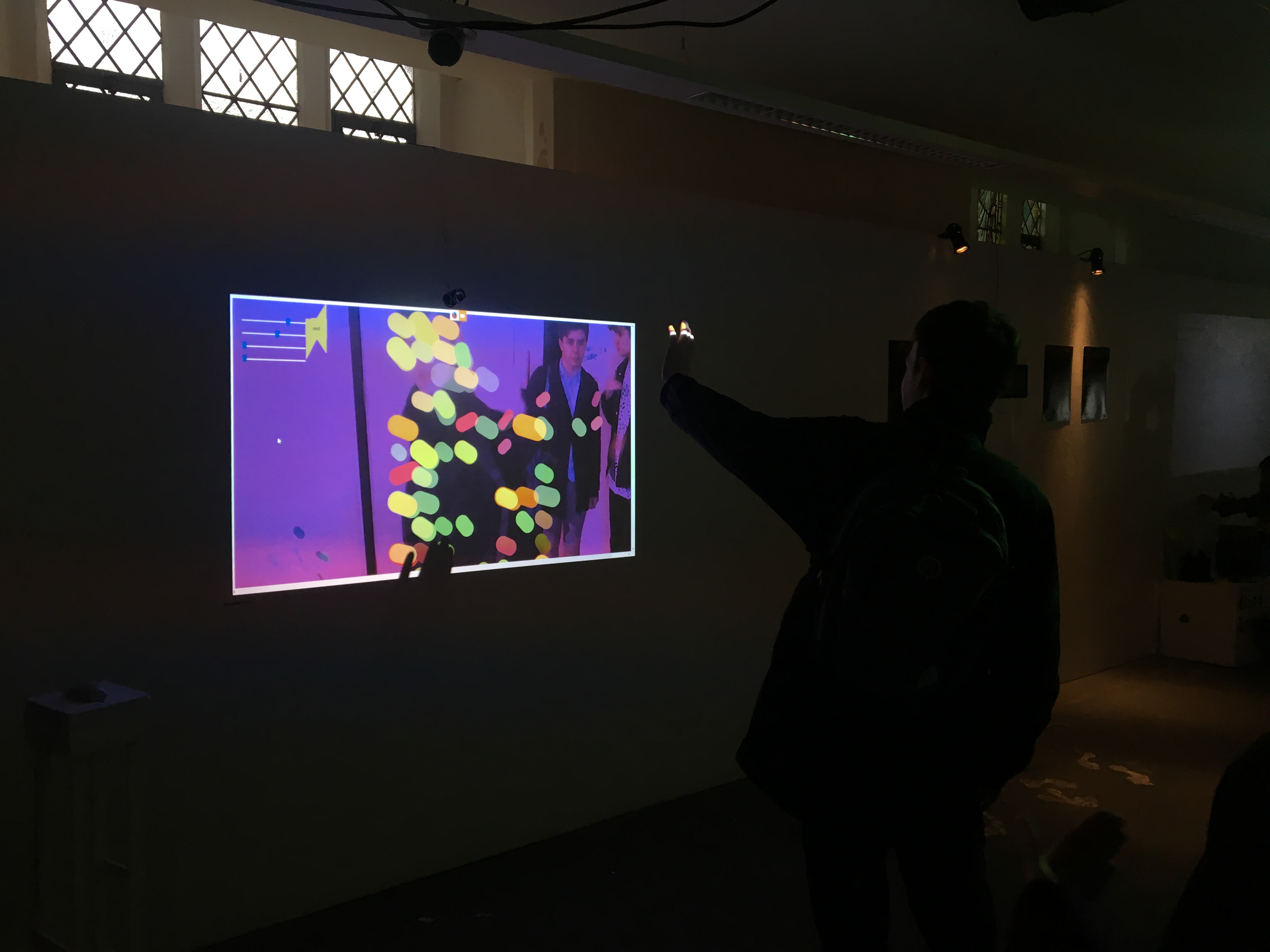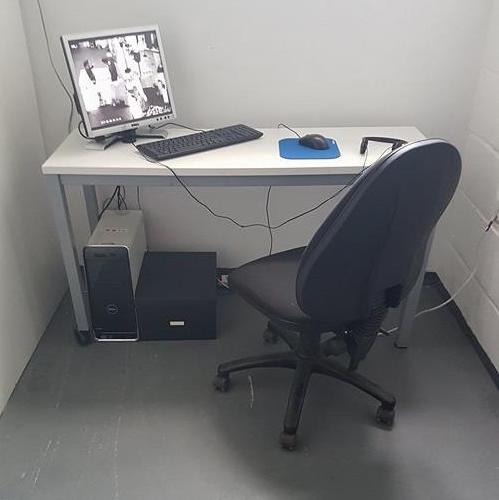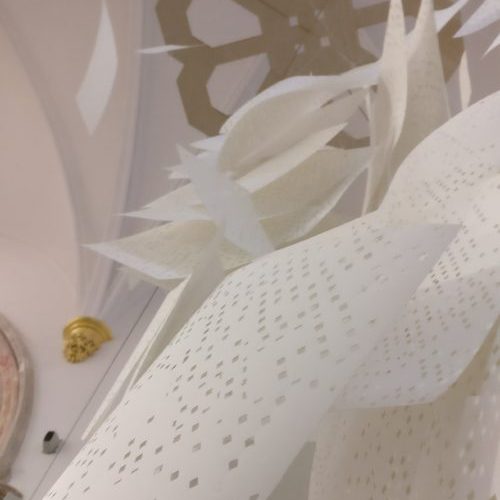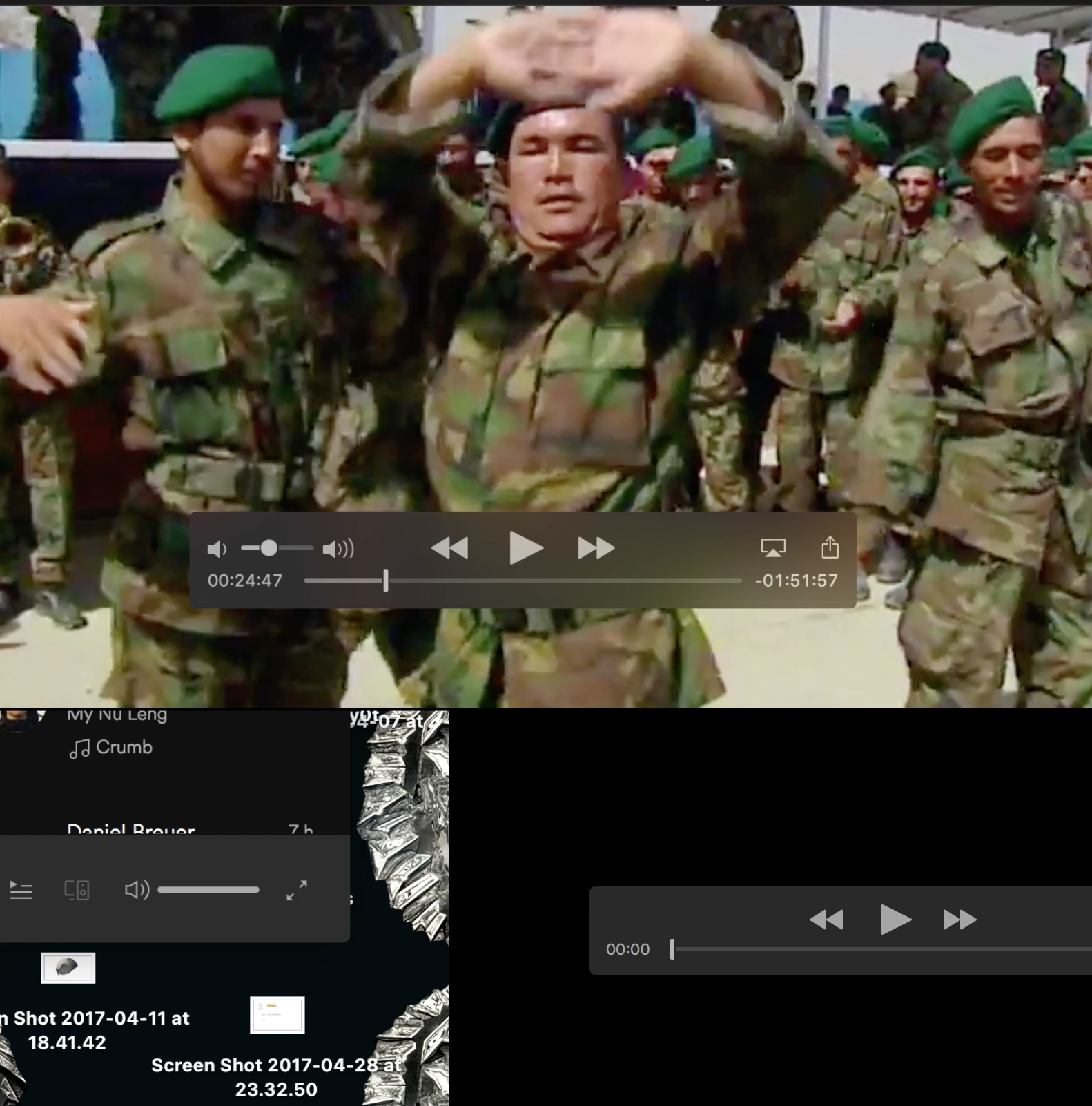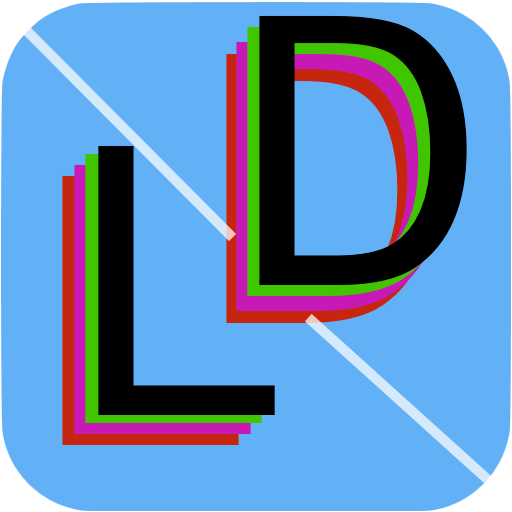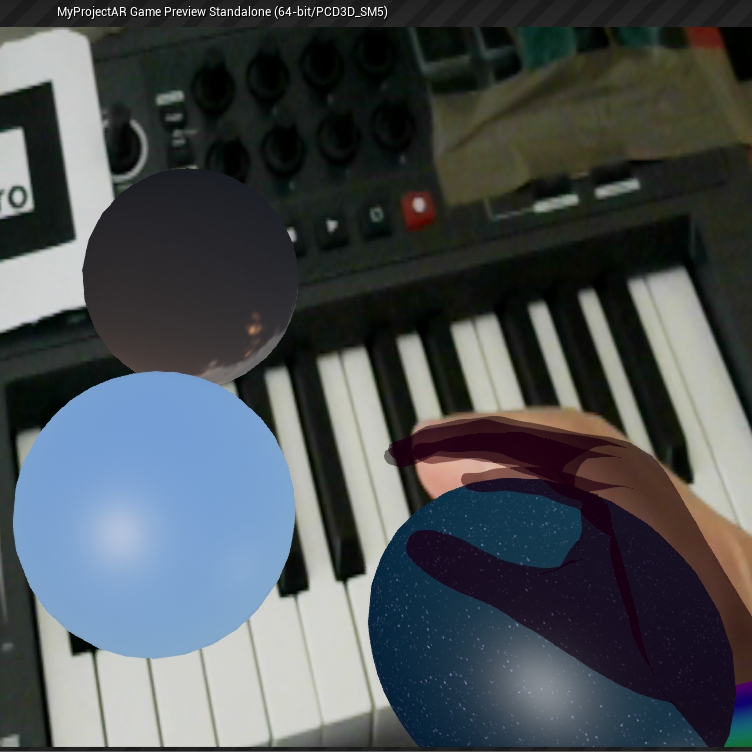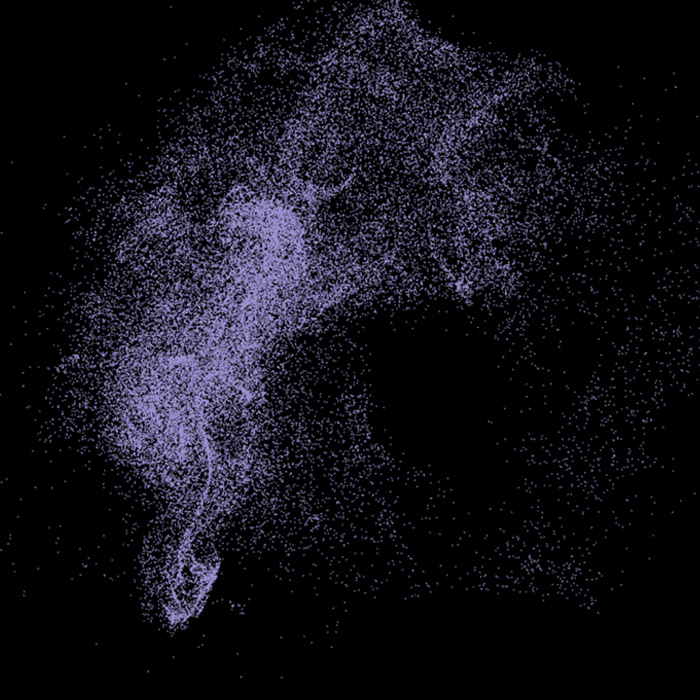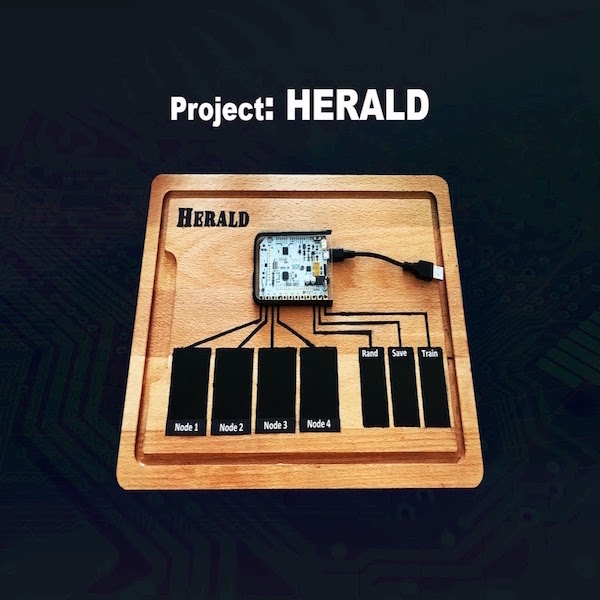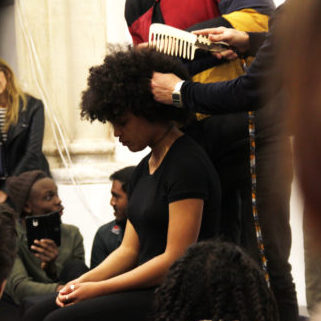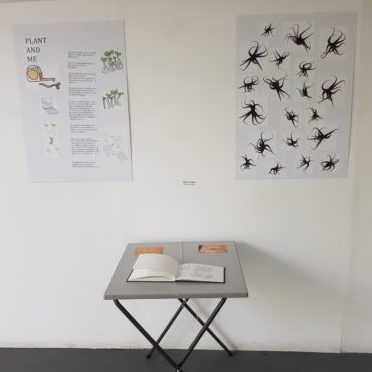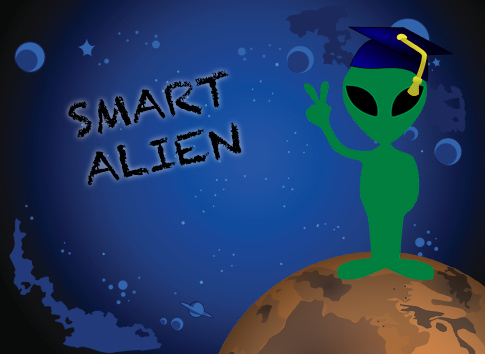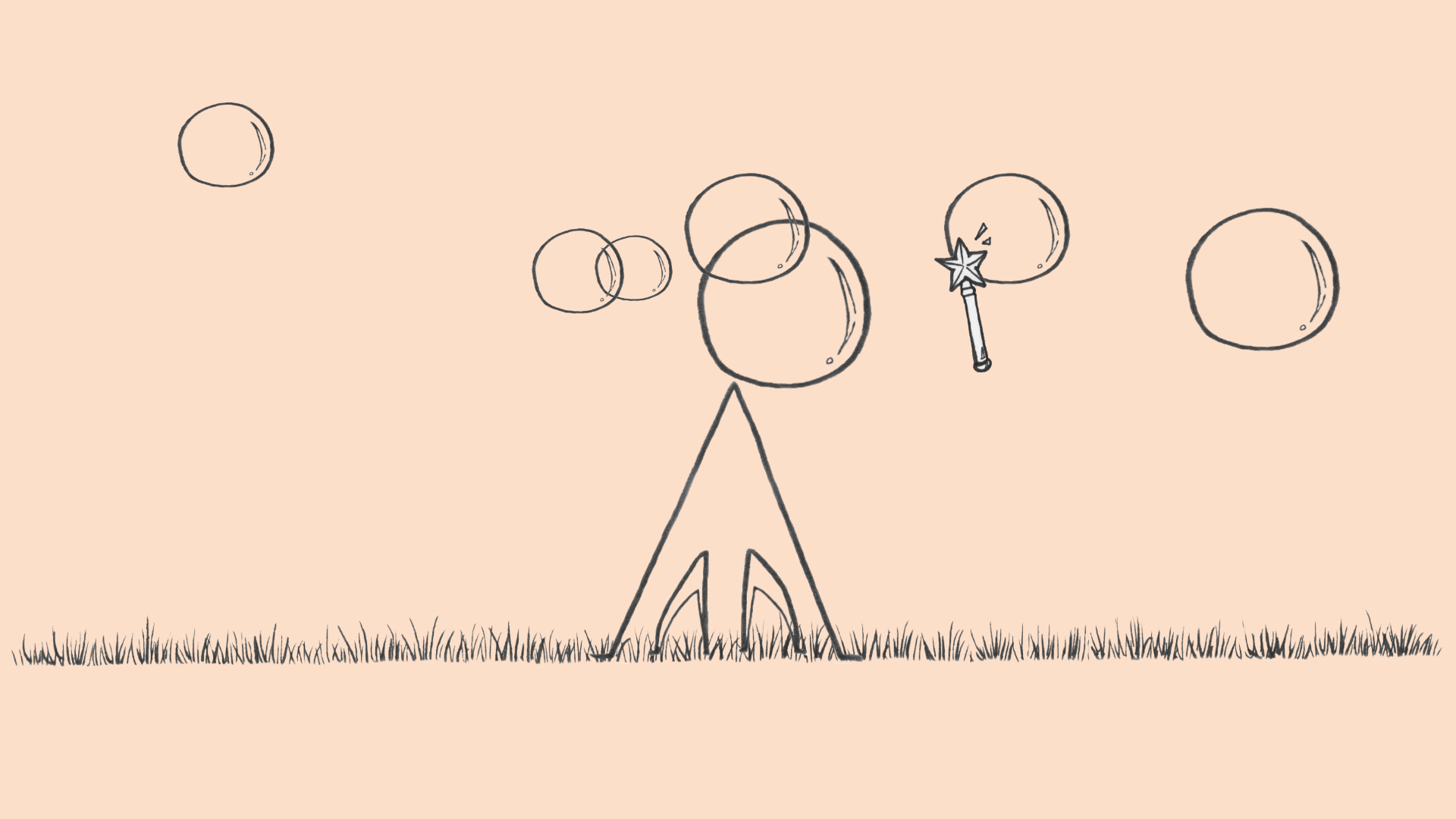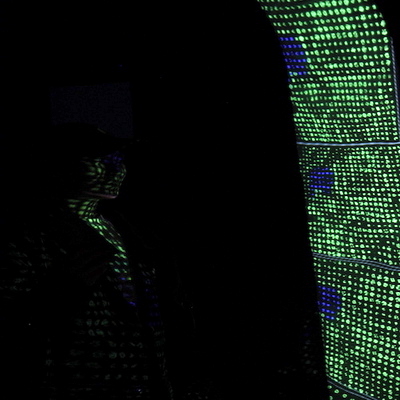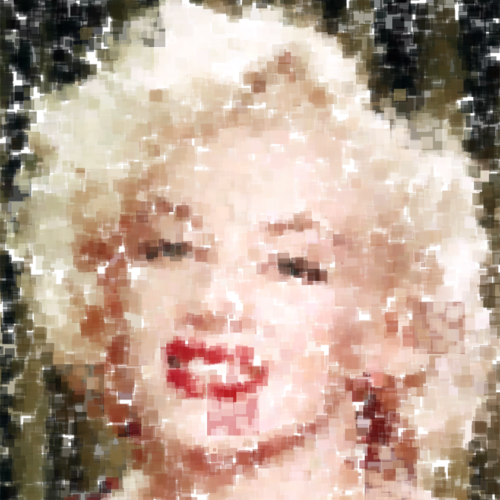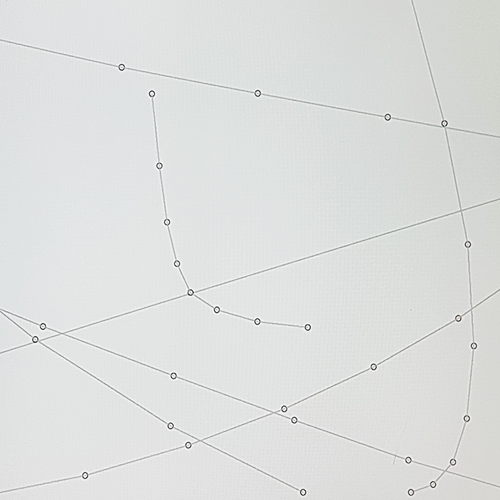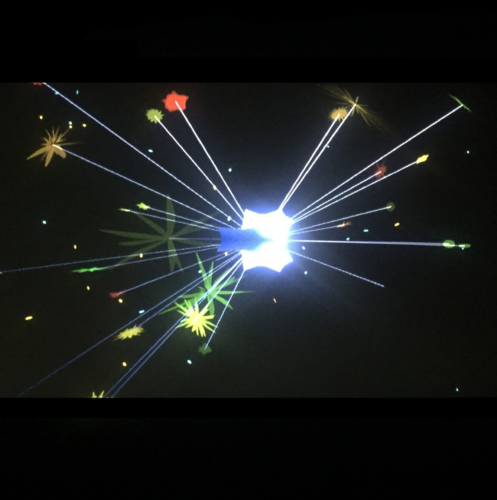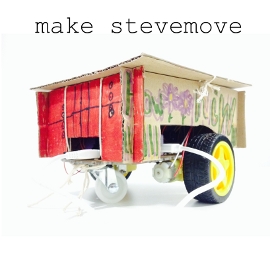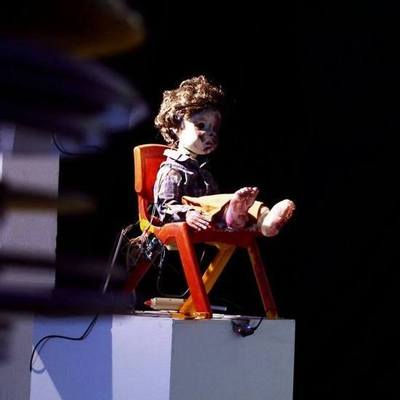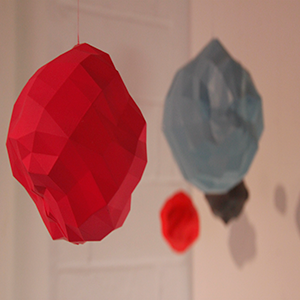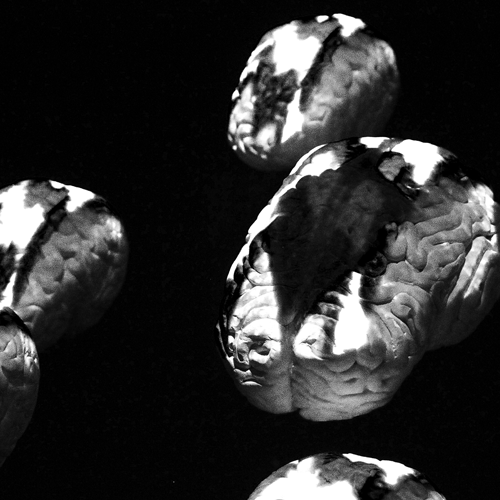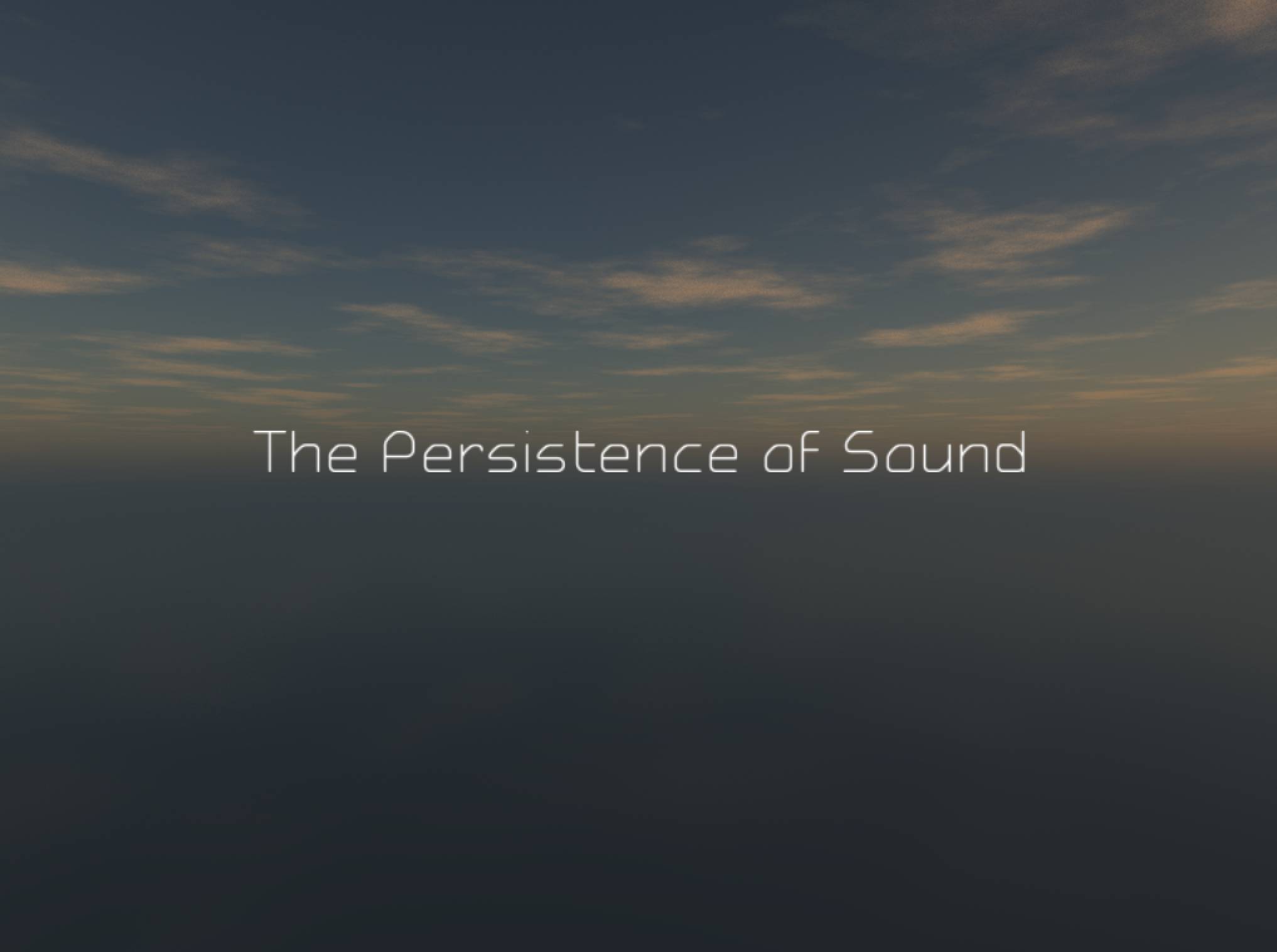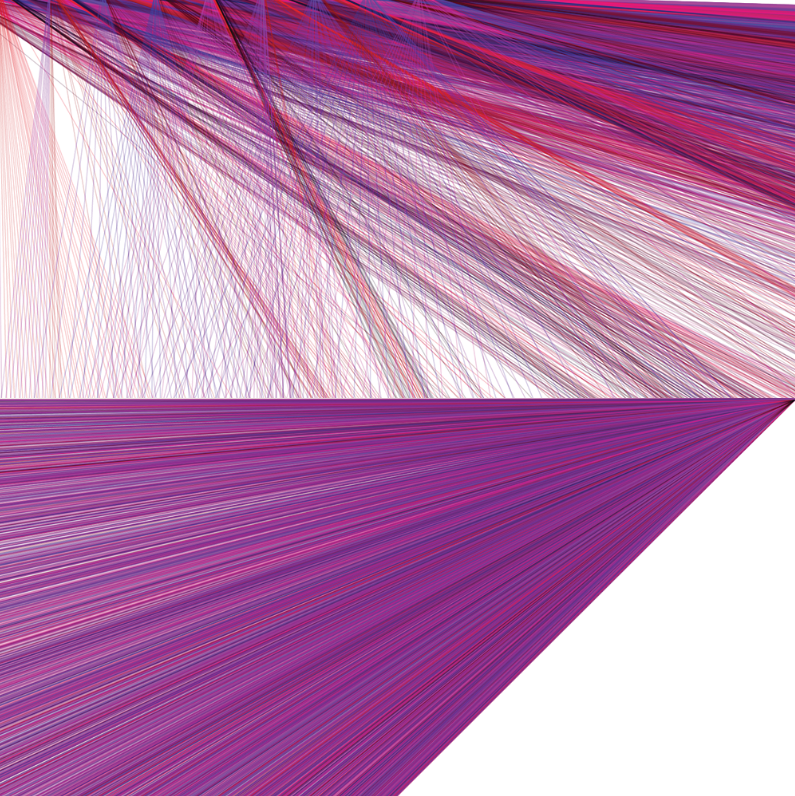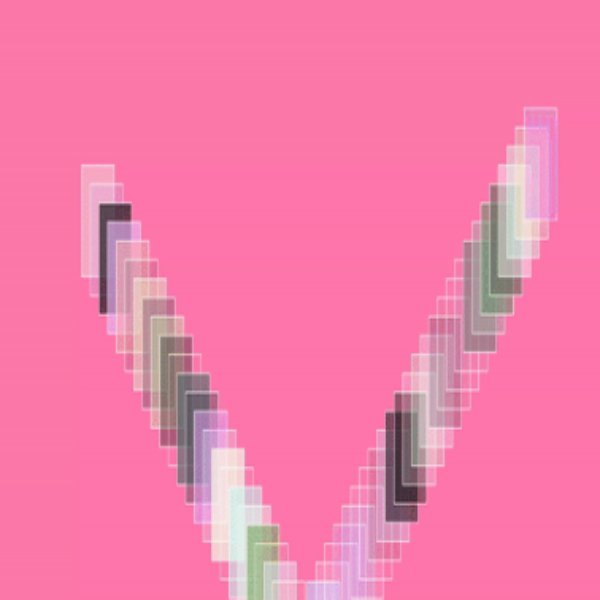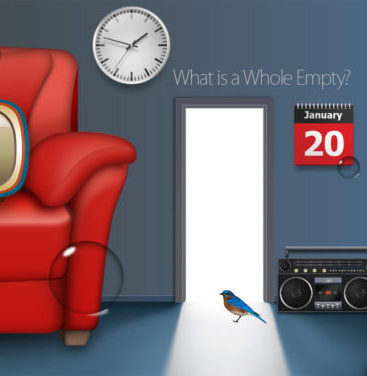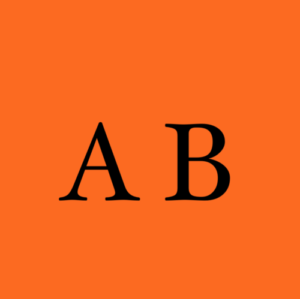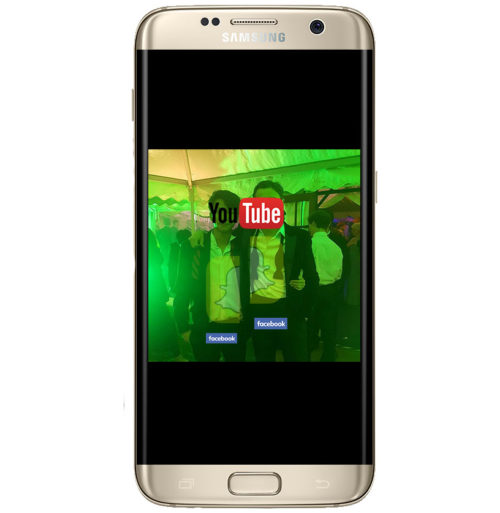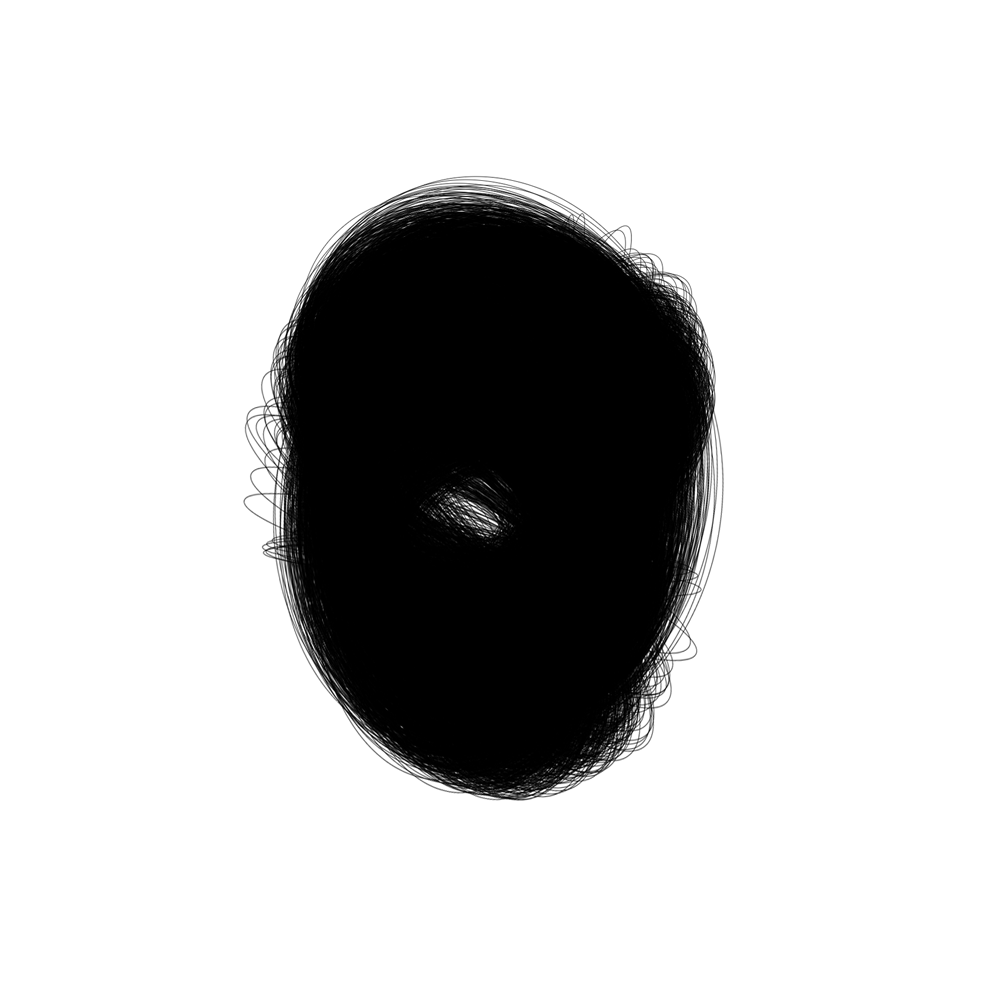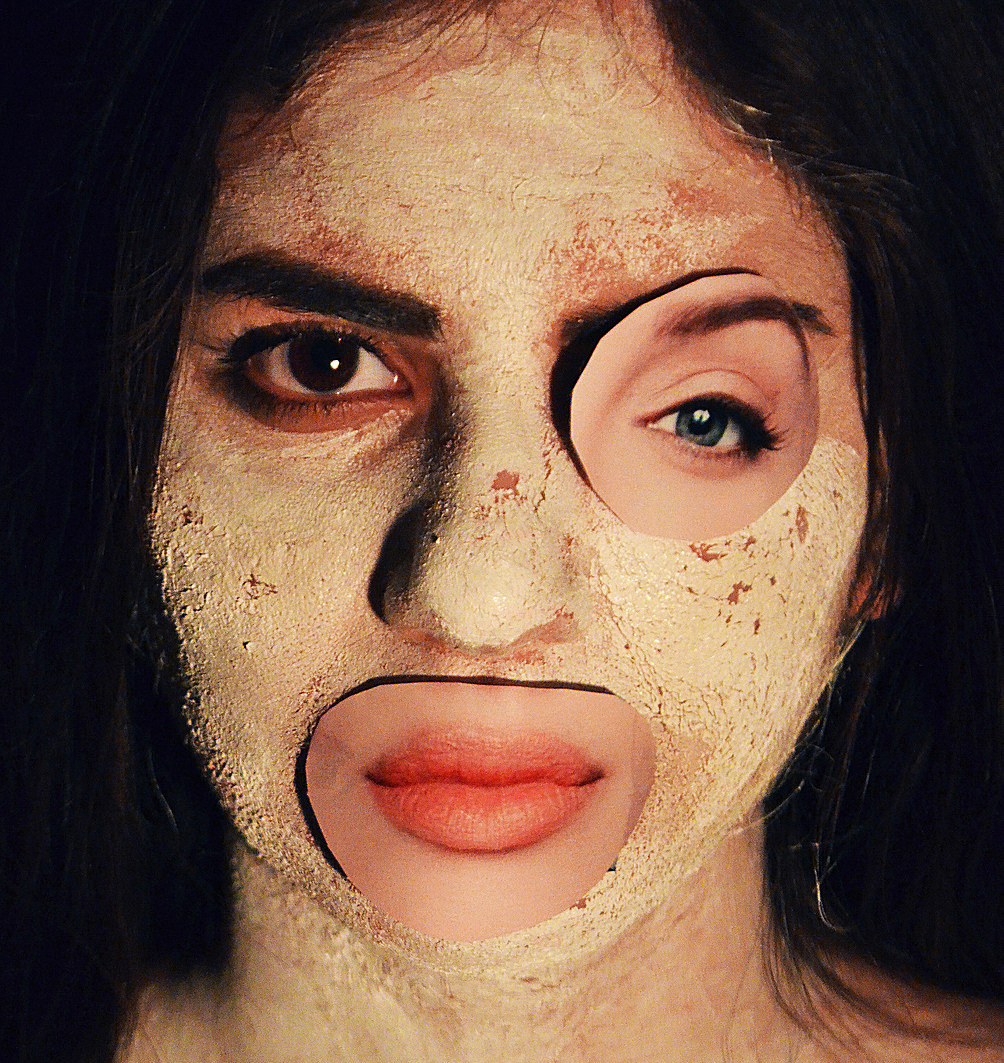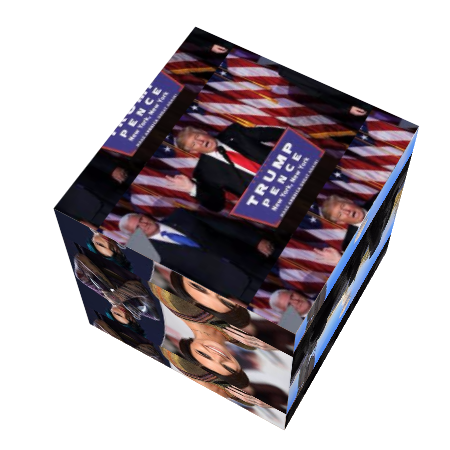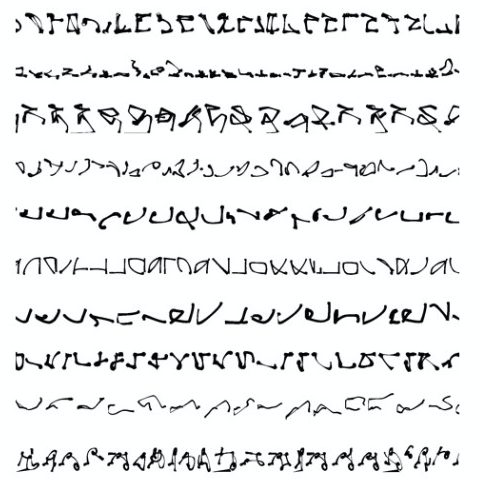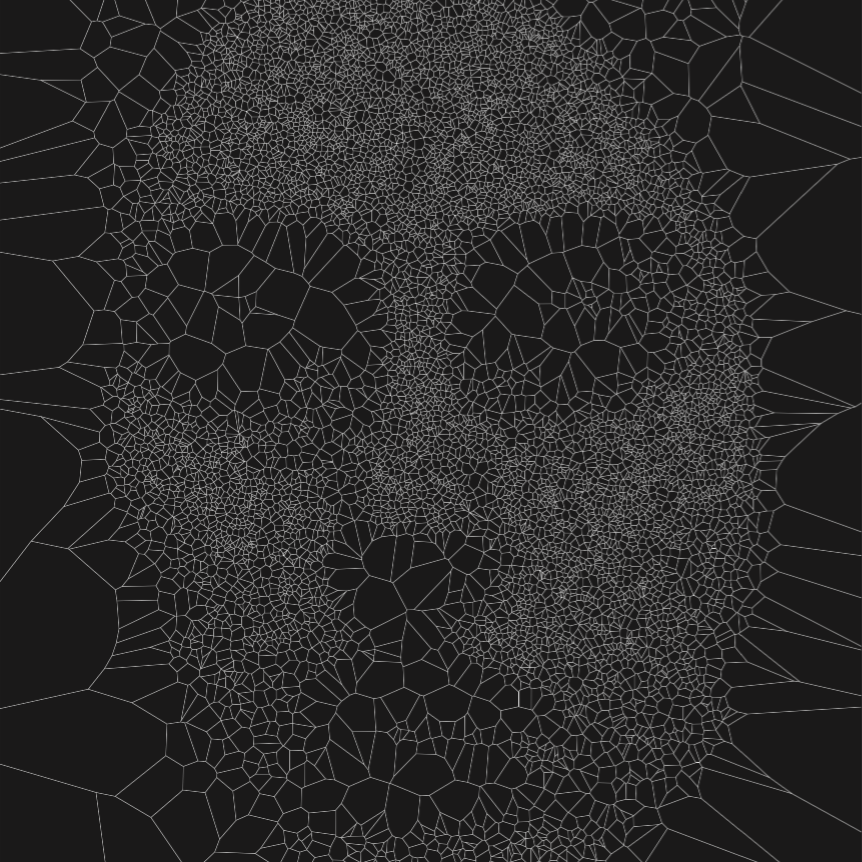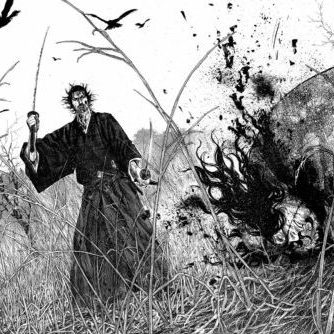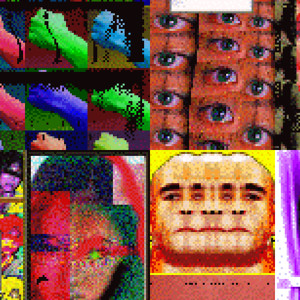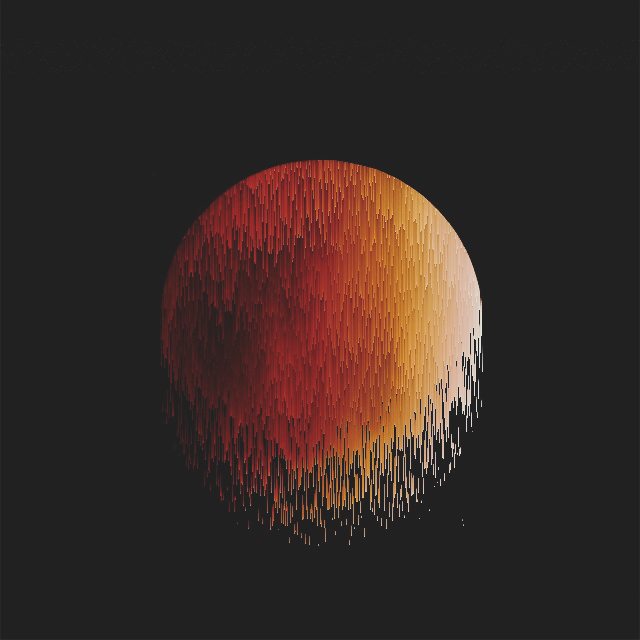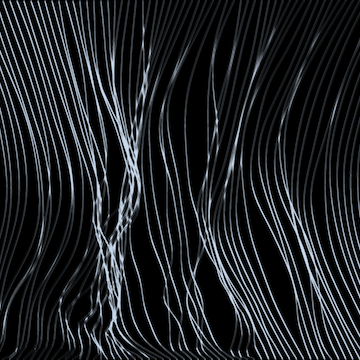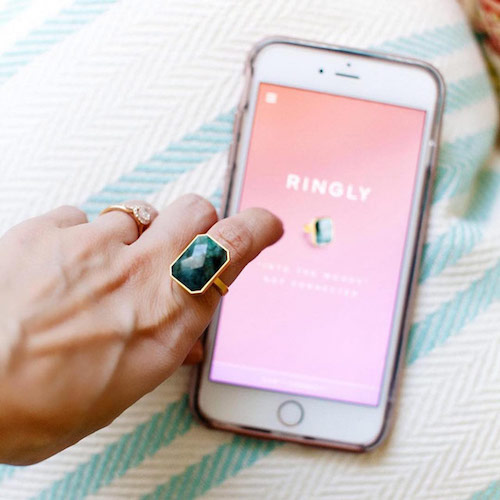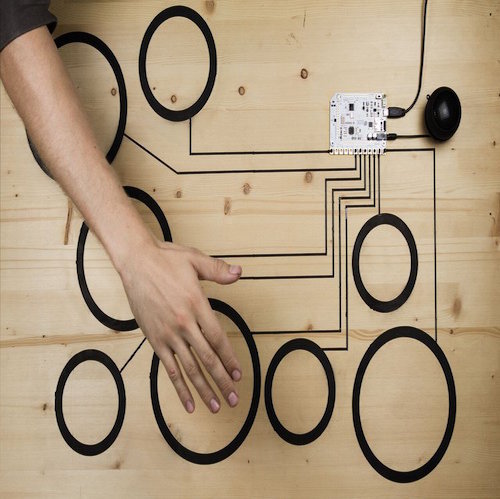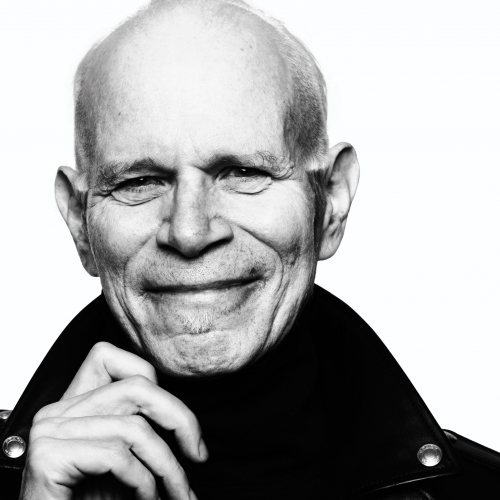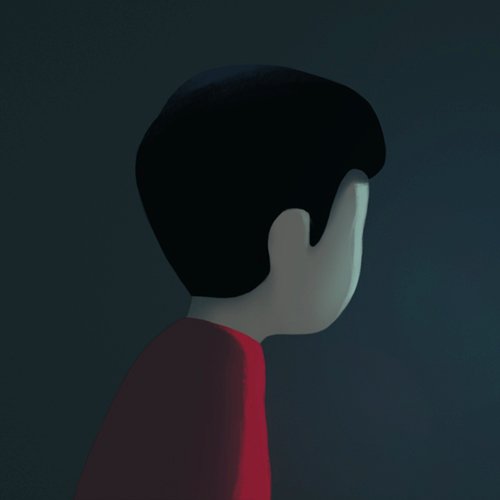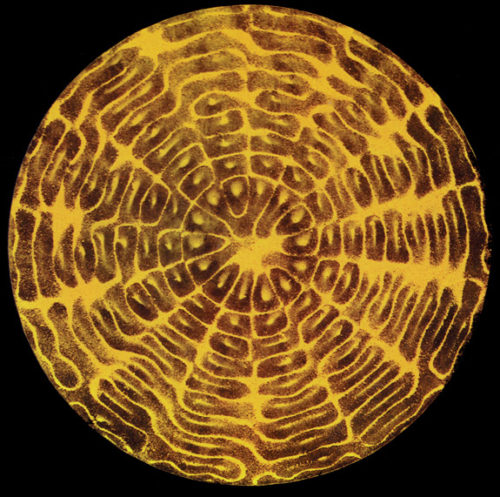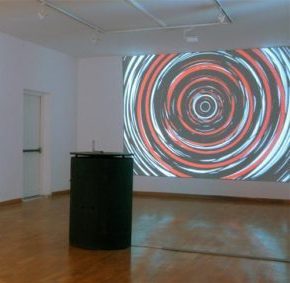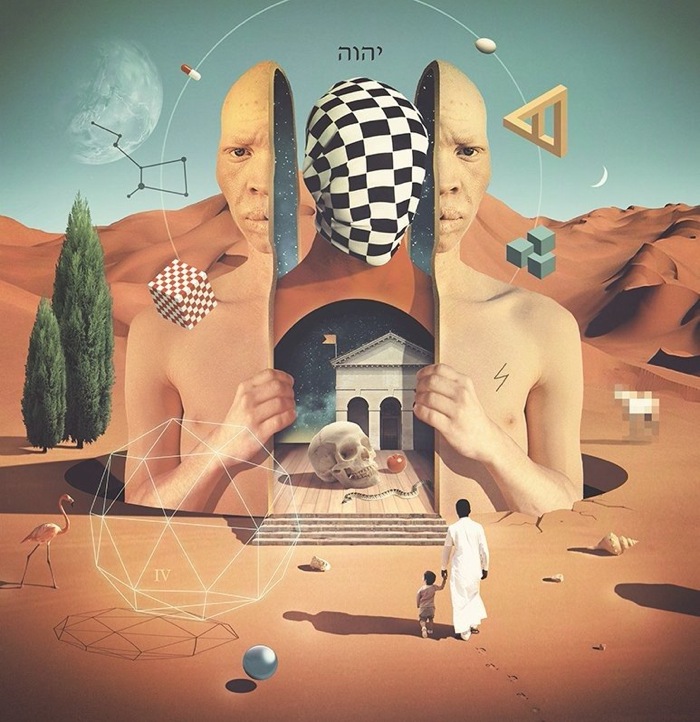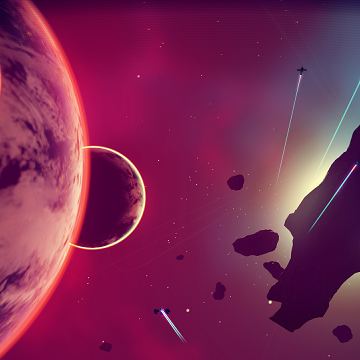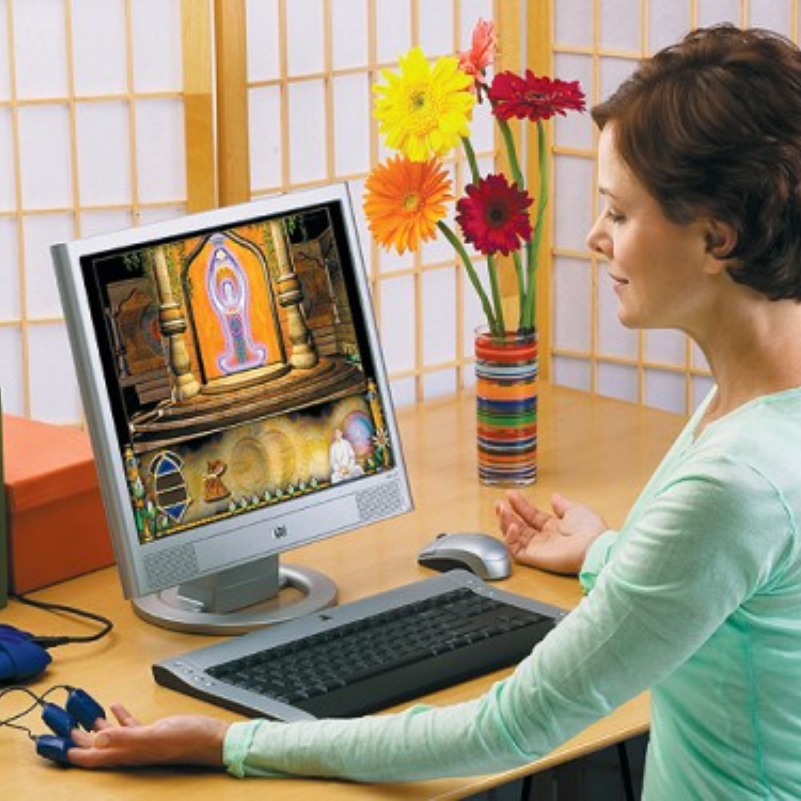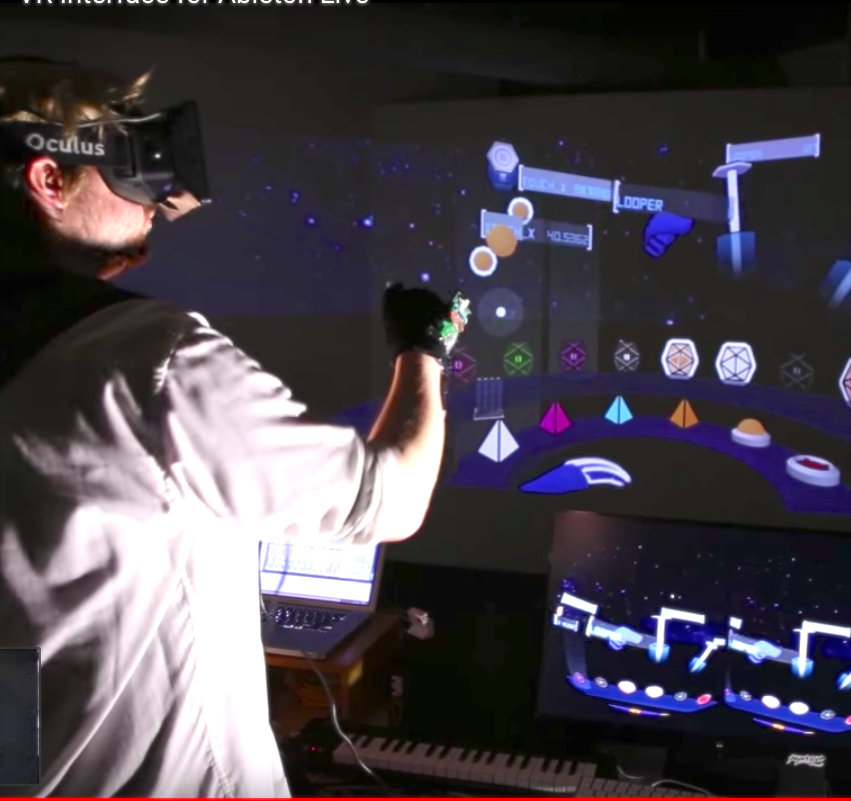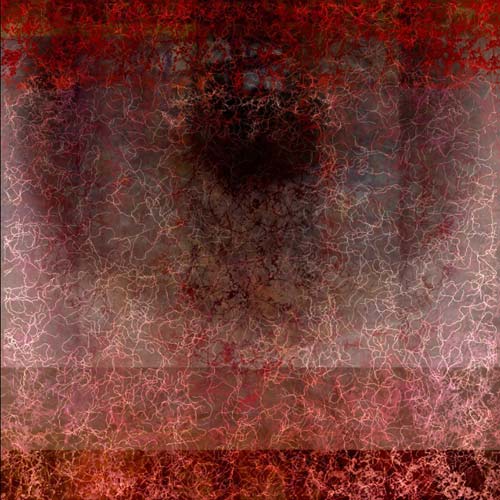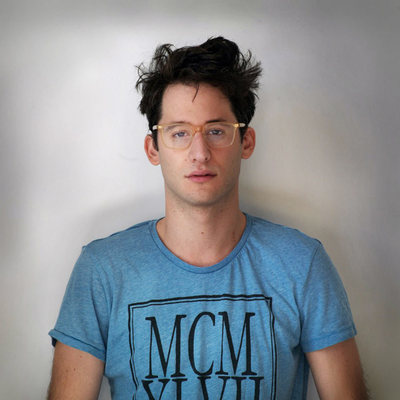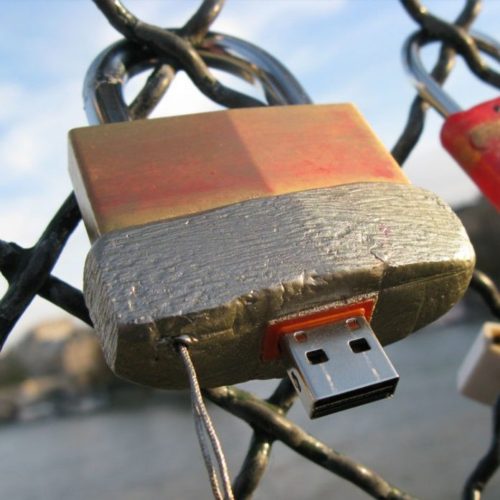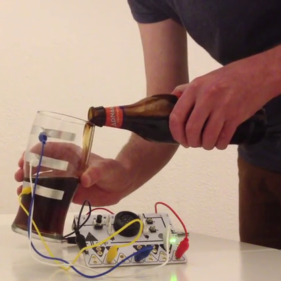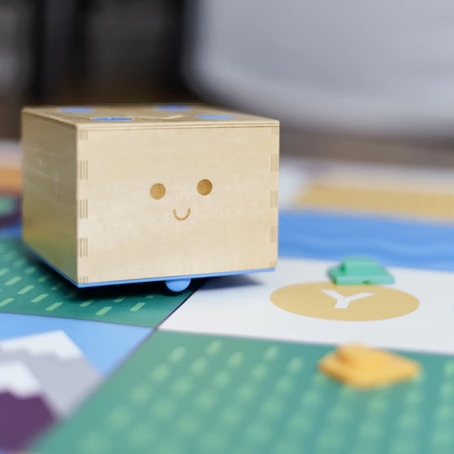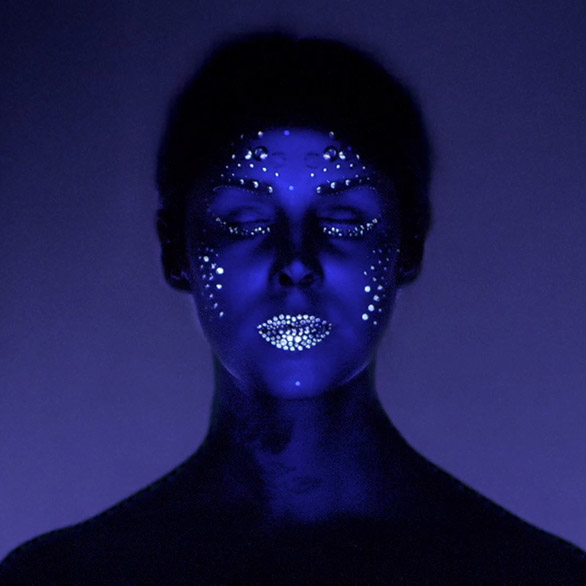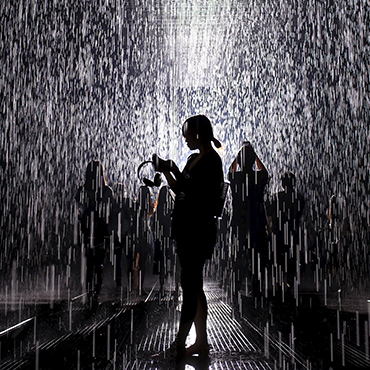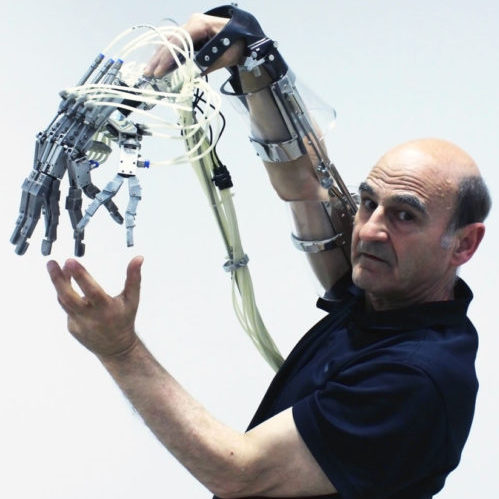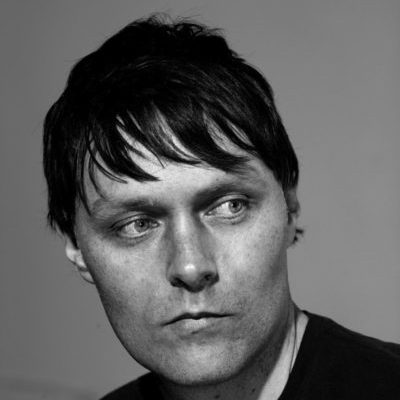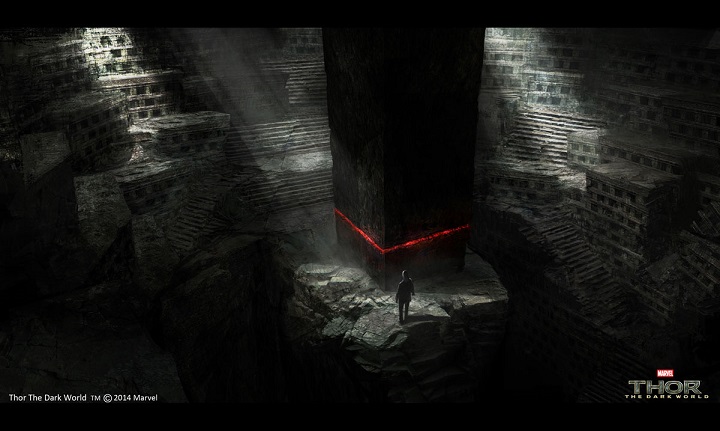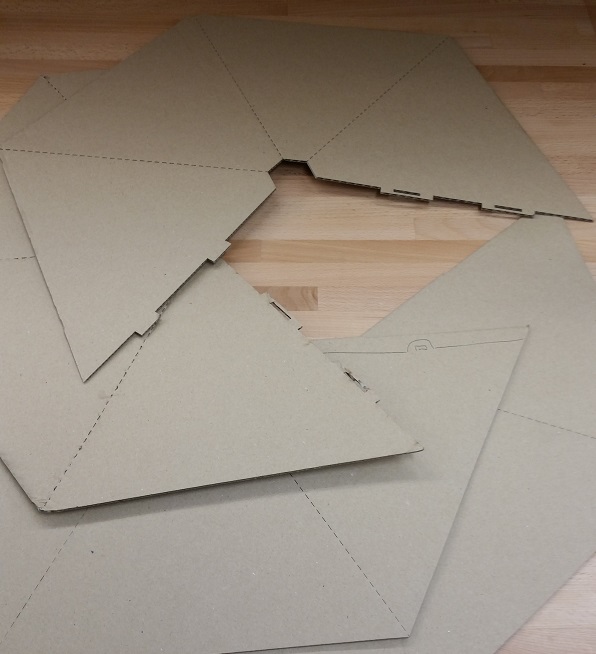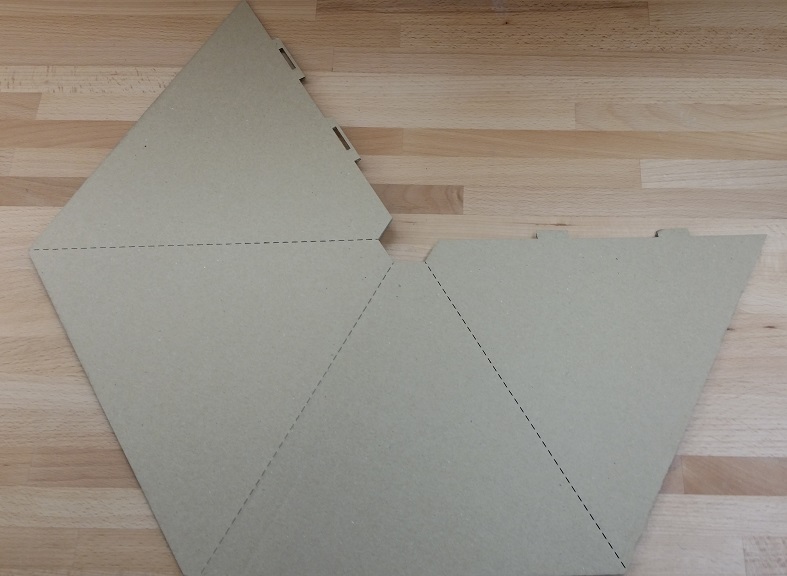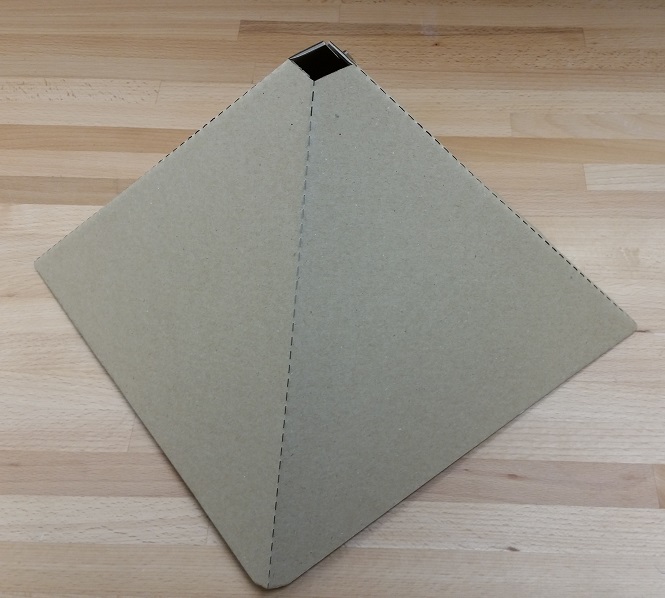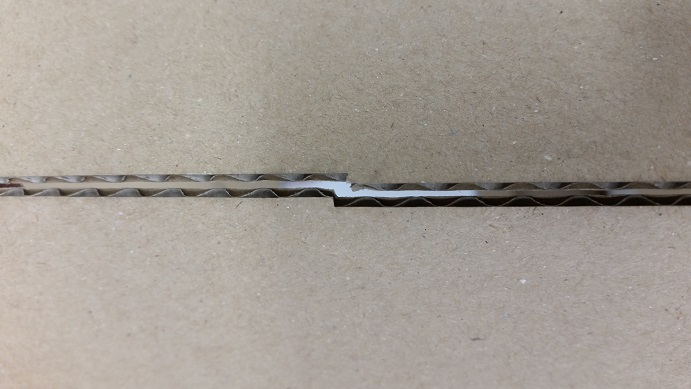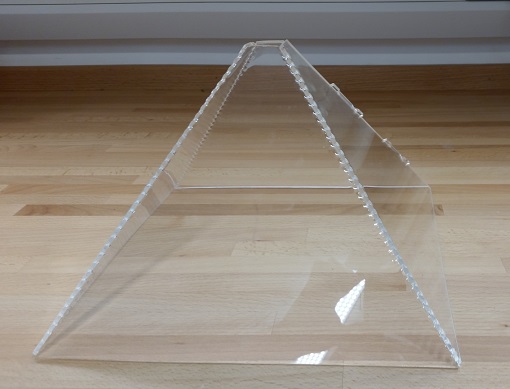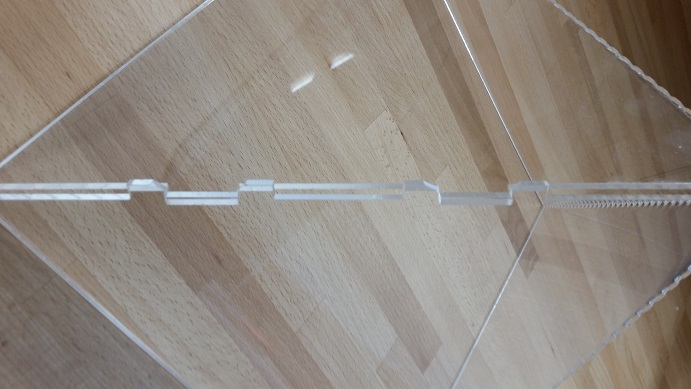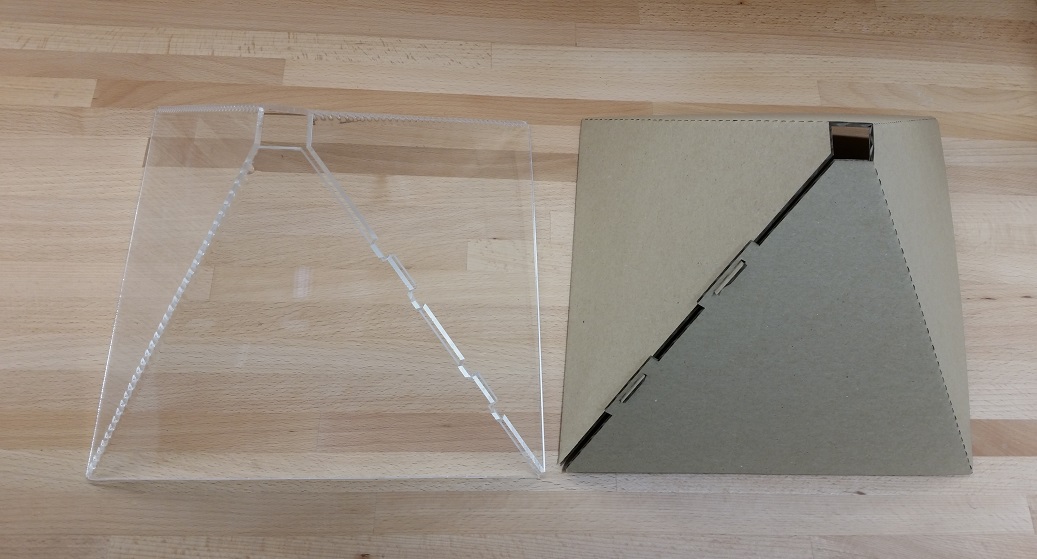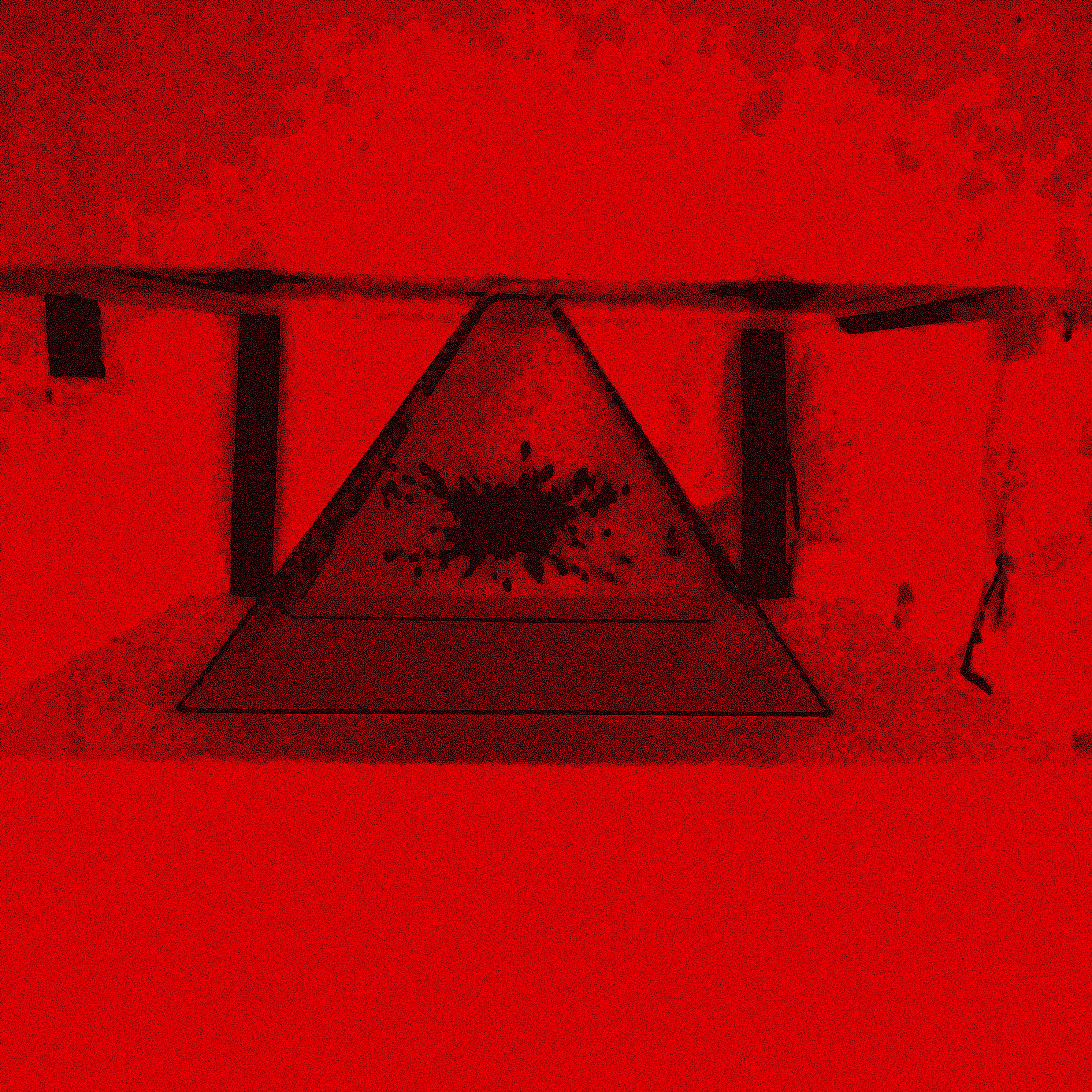

Arcane - Digital Arts Computing Exhibition
by: Djamel Ouddane
Introduction
Arcane is an installation that uses a screen and synced video in four instances made from C++ coding, that projects images down into a transparent pyramid shaped prism to give the impression of a hologram. The artwork's inspiration came from a love of sci-fi and fantasy media. The piece needed to embody the feeling of finding an artefact or relic in some lost temple or a futuristic hidden space. Wanting to reach out and touch it however the fear of the unknown stopping you.
Creative research
The initial creative research was aimed towards a completely different piece, as I had originally planned to make a game. There were some constraints which did not allow me to do so, I then decided to do further research towards creating the holographic prism. Some of the inspiration came from films such as Thor: The Dark World whereby the character Jane foster [1](see video clip below) stumbles upon an anomaly in physics and gets transported via portal to another dimension and finds a large monolith with a foreboding glow at the centre of it. The concept of containing rare or mysterious objects also stemmed from Indiana jones who would raid forgotten cities and find precious stones in the shapes of skulls and the collector from the Marvel Comics Universe who would procure dangerous items or people whether they are dead or alive.
Audience
The people I wanted to aim this artwork towards are of the public for aesthetic approval and those who have an interest in science fiction or fantasy. The premise that illusions involve magic, makes it more appealing to people. Some want to know how the trick is done and others enjoy not knowing. The allure of a mysterious looking object is what I would like people to take from it and the possibility that there is still enchantment in the world.
Technical process
For the technical aspects, I searched the web and looked at various examples of code using C++ and openframeworks until I came across a 3d example of moving particles which was shown to me by a tutor. The problem I faced was that the code I was trying to study and understand for my own uses was a lot more advanced than what my current skillset is capable of. One of the problems was that I could not get four separate cameras to move and rotate on an offset within a cross grid layout, so that they could be projected onto the prism correctly. Some of the things I changed were the colour schemes, I opted for random colours to show a bit more diversity opposed to a singular green or red. Through all the problems I was having I realised that simplifying the process was the best step forward so I then recorded a short length of the coding sketch to edit together. The recording was then loaded into adobe premiere pro and synced together to make a cross grid while being looped.
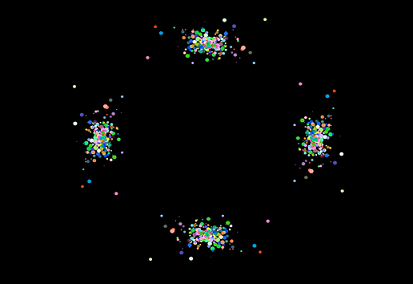

I considered how the prism should be presented and came across what is called Peppers ghost illusion through ray optics [3]. It is an optical illusion that is created when the viewing angle of a reflective surface is 45 degrees. There are a lot of people on YouTube making DIY versions using CD cases with their mobile phones or tablets however to make it bigger and more robust it would require thicker materials and to be cut with great precision without comprising the transparency.
Physical process
Apart from the persistent coding problems that programmers are faced with the biggest challenge I came across was fabricating the prism template and joints. I made multiple iterations on cardboard using a laser cutter starting from a single prism side and edited the illustrator files to accommodate the whole shape. Staring off with four pieces being stuck together I knew any use of hot glue or adhesive would be difficult to assemble, messy and would have negative impacts on the clear surface. I also opted against this for fear of wasting materials and to make the item ergonomic to hold together as the technicians said I would only be allocated one sheet of clear acrylic. The joints were a large issue because acrylic is not the easiest substance to bend into shape and the fastening joint kept becoming misaligned. First I started with a straight joint but then moved onto a slanted cut out, however it still required me to use an adhesive which I was looking to avoid. Upon discussing it within the lab I decided to make a tab and slot joint which enabled me after a few cardboard prototypes to hold it together firmly. I then went on to make the final acrylic piece and once it was done used a heat gun and clamps on the perforated corners to bend them into shape. The problem with this is that it was extremely easy to over extend the angles of alignment with very little time to manoeuvre the surfaces. Please find below a collection of images of the progress and various prototypes.
Exhibition
The time between fabricating the prism and setting up the installation was all but one movement. We needed the prism to determine the distance the large 32-inch screen above it would be suspended. Through attaching a bracket and strong metal cables we rigged the screen from the above apparatus and lowered it down onto the pyramid, which was sitting on the plinth I wrapped in black cloth. I opted against leaving the prism under the screen overnight as the cables would stretch and level out, possibly damaging the screen. Furthermore, lining up everything takes but a matter of moments. Due to the way, the installation was oriented I could not use my laptop to run the recording, therefore I used a media unit supplied by the technicians. This made it possible to attach and hide all the cables above the screen with minimal effort using a black cloth.
The exhibition this year was brilliant with everyone commenting, giving creative objection and critical advice but most of all enjoying the piece displayed. In contrast to last year’s work it may have not been as large and bright but it definitely had people curious and asking how It was made. The viewers could not help but have a touch of the prism and stroll around it while asking where I was projecting the particles from, who were pleasantly surprised when I mentioned the screen above. The piece very much benefitted from being the first thing you see in the dark room where it was located. The lack of harsh lighting allowed for brighter colours and a clearer image to be seen.


What I would do differently?
The best improvements would be to make the prism bigger and to have more variation for what is shown within. If my coding skills were more proficient, I would have liked to add interactivity whether it be sensors or to have the particles react to the audio or vibrations around the space. However, any visual detection would have some difficulty as the piece benefitted from the space being extremely dark. Further things I would change would be to manage my time better especially towards the fabrication process, as it requires access and knowledge far beyond what was immediately available to me. Regarding the coding, I have learnt that even simple programs can have great outcomes, intricate and elaborate programming can have both desirable and negative effects on a piece. Most of all that I need to improve on what programming knowledge I have if I seek to surpass what I have previously done. I would also add holographic film onto the prism surface to boost the light and fidelity being captured. If a recording were to be used again, it would have to be made to be longer to avoid any flickers that happen due to the looping media. Last but definitely not least I would push to gitlab properly as I did not realise we had to do this until near the ending of the project.
Conclusion
The artwork in total accomplished what I had meant for it to do. Being the initial centrepiece in a very impactful room of the exhibit allowed for an immediate appreciation and reaction from people. Furthermore, flowing with and complementing particular traits of the other artworks shown in the space to create a brilliant atmosphere. The surrounding effect and ambience embodies what I wanted to achieve with the installation and without the lighting and environment I doubt it would have been achievable. For next year, I seek to improve on the shortcomings of both myself and the limitations that time and knowledge imposed. Although all I have learned through the entire process will most definitely translate to further artworks I come up with and help to refine a somewhat stunted process. Arcane shifted more towards what I could physically accomplish and the coding was less prevalent, however I learned that next time it should take a more impactful role.
References
[1] Thor: The Dark world - Jane Foster finds the Aether -Youtube clip
[2] Thor: The Dark world - Image
[3] Pepper's Ghost explanation - link
Gitlab repo: Exhibition prism - https://DreadHarvest@gitlab.com/DreadHarvest/Exhibition.git
Other mentionable links:
OpenFrameworks examples - Link - https://github.com/openframeworks/openFrameworks/tree/master/examples
Idea to record - Link - https://www.cyberlink.com/learning/video/197/create-3d-hologram-video-with-powerdirector
OfRand values - Link - https://forum.openframeworks.cc/t/akward-behaviour-of-random-colours-on-screen/14653


